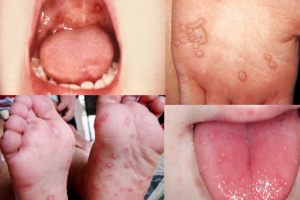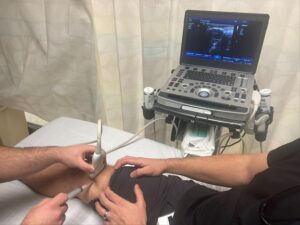Today on the emDOCs cast with Brit Long, MD (@long_brit), we cover a complication with alcoholics: alcohol-induced ketoacidosis.
Episode 47: Alcohol-Induced Ketoacidosis
Definition: syndrome of alcohol use and ketoacidosis
- Most common in those with chronic EtOH use, but may occur in those with binge drinking
Epidemiology:
- Difficult to determine epidemiology due to variable presentation, underdiagnosis
- Most cases occur in those with poor nutritional status, long-standing EtOH use/binge drinking and decreased oral intake
- Higher rates in those with baseline hypoglycemia, lower BMI, smoking, drink whiskey, slow-metabolizing alcohol dehydrogenase enzymes
- Associated with 7% of deaths in those with EtOH use
Pathophysiology:
- Several underlying issues with EtOH: reduced glycogen and nutritional stores, elevation of NADH when compared with NAD +, volume depletion
- Elevated NADH -> impaired conversion of lactate to pyruvate (increases lactate), impaired gluconeogenesis, increase in beta-hydroxybutyrate production compared to acetoacetate (19:1 compared to 11:1 in DKA)
- Leads to anion gap metabolic acidosis, ketosis, and reduced glucose availability
- Alcohol + No food + dehydration with stressor = AKA
Etiology:
- Most common precipitants include infection and pancreatitis
- Any condition that may reduce oral intake can result in AKA: intra-abdominal pathology (e.g., cholecystitis, appendicitis, obstruction, perforation, mesenteric ischemia), alcohol withdrawal, diabetic ketoacidosis, and other toxic ingestion (e.g., salicylate toxicity)
History and Exam:
- Presentation includes history of alcohol use, poor nutrition, and cessa- tion of drinking with the development of gastrointestinal symptoms
- Symptoms: nausea (3/4), vomiting (3/4), abdominal pain (40-75%), diffuse abdominal pain (75%)
- Abnormal bowel sounds, abdominal distension, and rebound tenderness suggest another intra-abdominal condition
- Usually normal mental status, but may have mild alteration; severe altered mental status suggests another condition
- Tachypnea, tachycardia, hypotension, hypothermia
- Beware Wernicke encephalopathy (Nystagmus/oculomotor dysfunction, dysmetria, incoordination/ataxia, memory impairment, or altered mental status should not be present in AKA)
Evaluation:
- Primary findings: anion gap metabolic acidosis, ketosis, lactate elevation
- Other conditions with ketoacidosis/elevation anion gap metabolic acidosis:
- Mixed acid-base conditions common
- Classically low serum EtOH levels, but this is not reliable; one study suggests over 80% have elevations over 100 mg/dL
- Serum glucose most commonly low or normal
- 10% have levels < 60 mg/dL
- 11% have hyperglycemia, typically < 275 mg/dL; if > 250, consider hyperglycemic emergency
- Electrolyte abnormalities: Decreased Na, phos, K, Mg
- Ethylene glycol and methanol toxicity: severe anion gap lactic acidosis (serum bicarbonate < 10 mEq/L, pH < 7, lactate > 4 mmol/L) or elevated osmolal gap, altered mental status, and severe end organ injury
Management:
- Always consider underlying etiologies; treat if present (hypothermia, rhabdomyolysis, pancreatitis, infection, seizure, delirium tremens, MI, intra-abdominal pathology, PE)
- Fluid resuscitation, glucose and electrolyte repletion, symptomatic therapy (antiemetics)
- Balanced fluids may reduce hyperchloremic non-anion gap metabolic acidosis
- If hypoNa, use isotonic fluid containing dextrose
- Dextrose repletes serum glucose, increases insulin secretion, and decreases glucagon secretion, which reduce ketoacidosis, improves pH
- If glucose < 60 mg/dL, give dextrose 50% 50 mL or 10% 100-250 mL
- If glucose not severely decreased, assess potassium first => glucose repletion can result in insulin secretion and cause hypokalemia
- In patients who are normoglycemic or mildly hypoglycemic with a potassium ≥3.5 mEq/L, dextrose 5% should be administered after initial fluid resuscitation
- Hyperglycemia => insulin infusion
- Replete electrolytes and thiamine (200 mg IV, 500 mg if Wernicke encephalopathy likely)
- Once improved, offer addiction support services
Disposition:
- Patients with the ability to tolerate oral fluids, resolution of ketoacidosis and electrolyte abnormalities, and improving volume status may be discharged with follow-up
- Patients who are not able to tolerate oral fluids, have continued hemodynamic changes, or unresolved ketoacidosis should be admitted to a monitored setting
Complications:
- Significant volume depletion, electrolyte abnormalities (e.g., hypokalemia, hypophosphatemia, and hypomagnesemia), and hemodynamic compromising dysrhythmias resulting in cardiac arrest








1 thought on “emDOCs Podcast – Episode 47: Alcohol-Induced Ketoacidosis”
Nice article